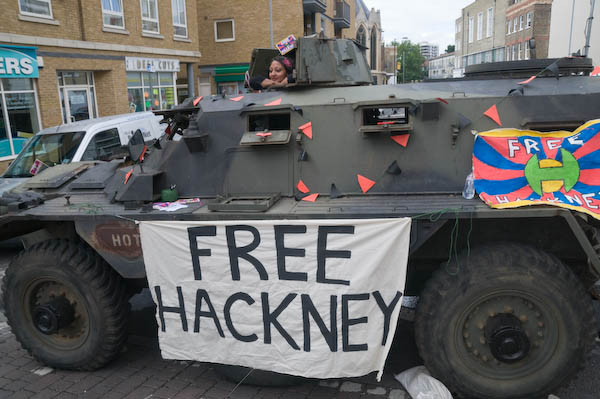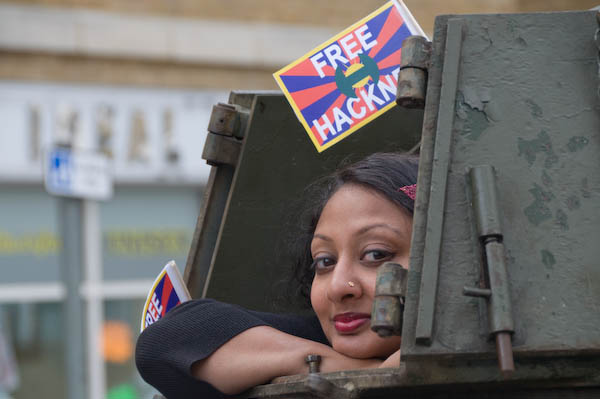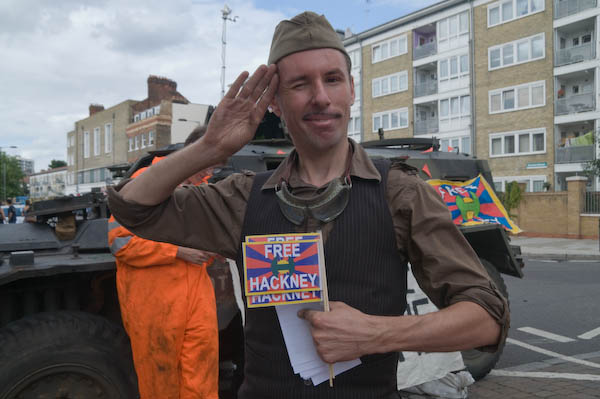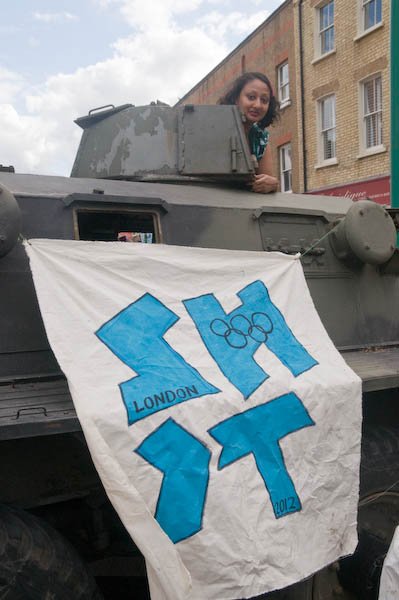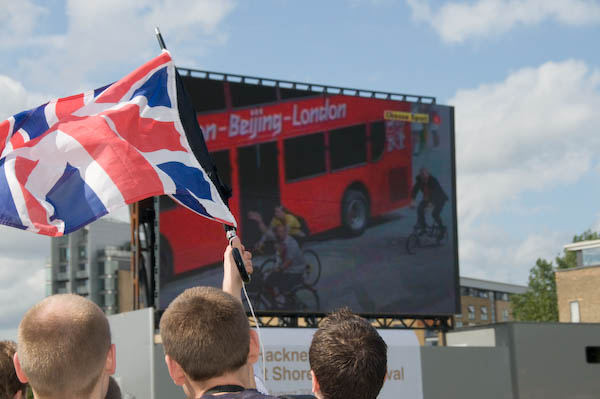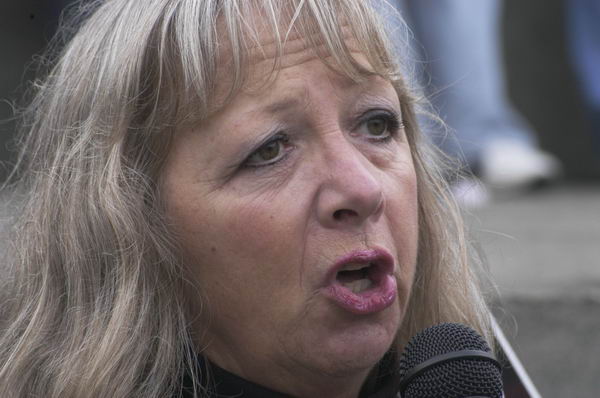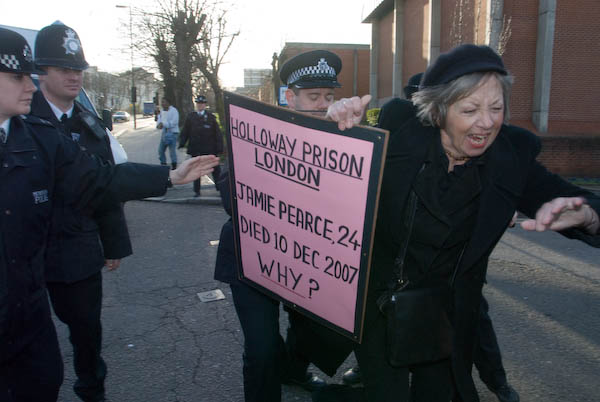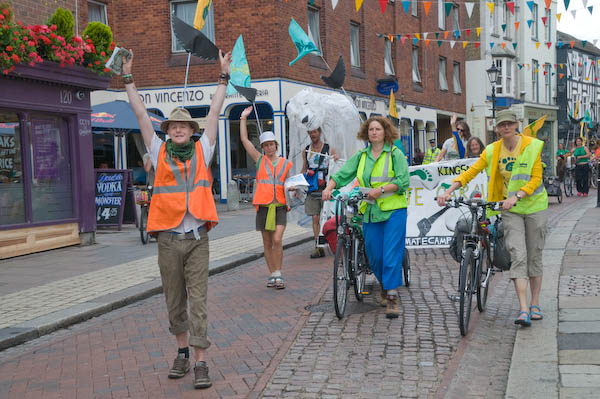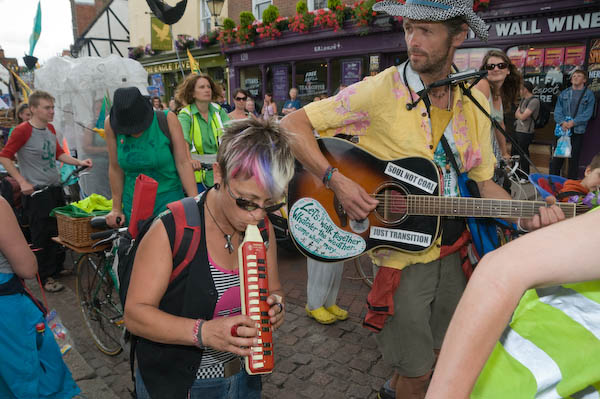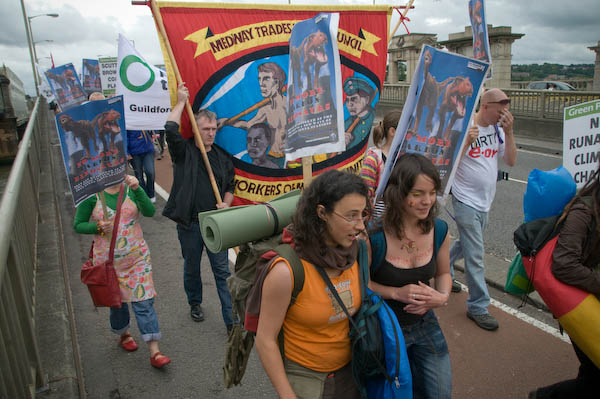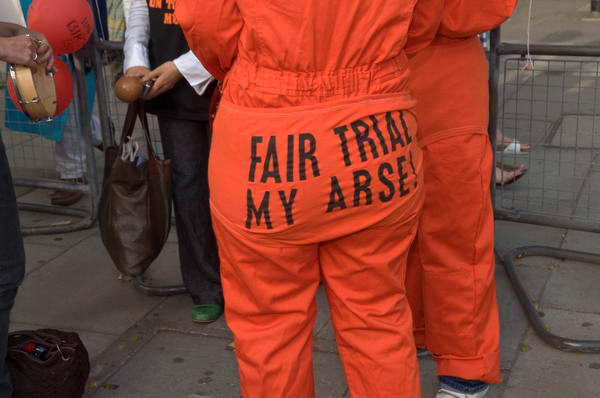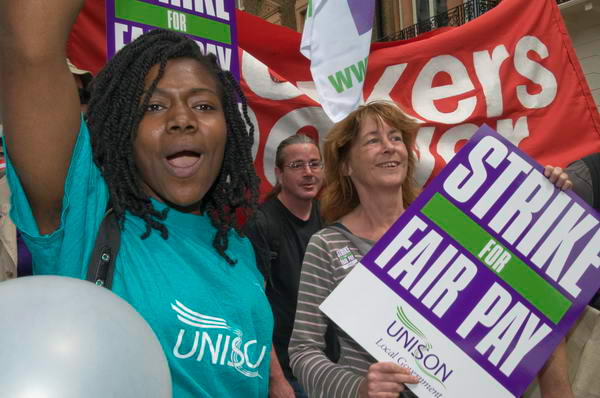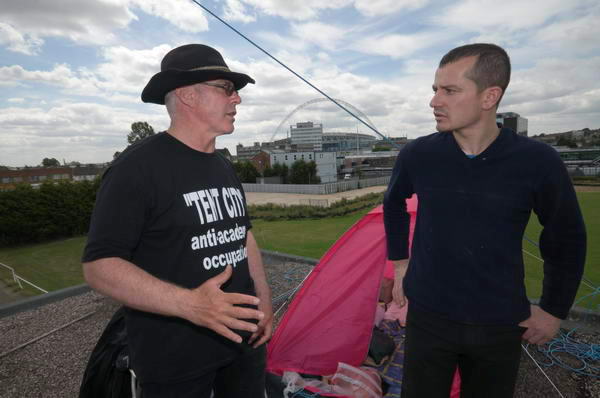There are two kinds of photographers when it comes to covering violent or potentially violent events, those like to keep safe and those who seem to hunt out trouble. I found out which I was pretty definitively on May Day in 2000, when I was in the middle of a surging crowd in Whitehall and a few yards away people started smashing the windows of that well-known fast food shop.

A woman shouts at demonstrators from behind a police line
My immediate thought wasn’t to rush and push my way through the packed bodies to get pictures, but to think whether I wanted to take pictures that might incriminate those involved. And I pointed my lens away and photographed instead some of the reactions to the event, including those of the police who after giving the demonstrators time to trash the place decided to move in, incidentally with a an entirely gratuitous violent assault by one officer on a photographer standing close to me – unfortunately my picture of the event too blurred to provide any evidence.
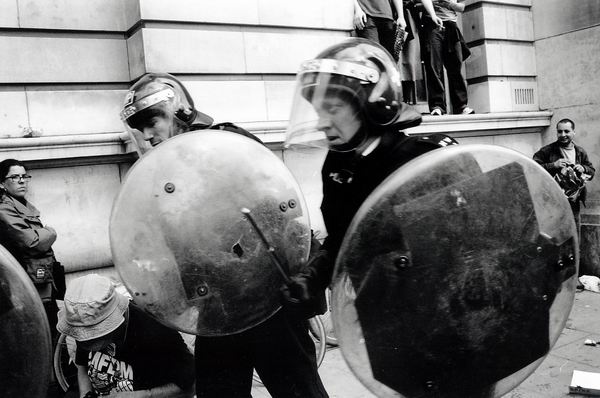
Police charge – but I missed a picture of a photographer close to me being hit by a baton
Looking back, it was the wrong decision, and certainly when the police charged I should have followed them rather than deciding it was time to go home rather than risk being detained by the police for several hours. Now I think I would react differently – and certainly now being an union member with a press card and an emergency support number helps a little. But I’m still a cautious (or sometimes rather timid) kind of guy.
So although I’ve been to Notting Hill Carnival for around 20 years I’ve never photographed any violence there. For me it’s a great event with hundreds of thousands of people enjoying themselves, while the press coverage this year gave almost as much attention to the 40 youths who had a minor rampage and threw bottles at the police on Ladbroke Grove as to the three-quarters of a million who danced along there earlier. (In the coverage from Sky on at the Times it is hard to see any rioters at all, though the streets are full of police.)
By 5pm I’d been photographing carnival for five hours and felt it was enough. All my pictures are about carnival and not about a violent few, and deliberately so, and I certainly left with a feeling that things might get at least rather lively later. I missed the violence because as always I went home long before it started as darkness fell.
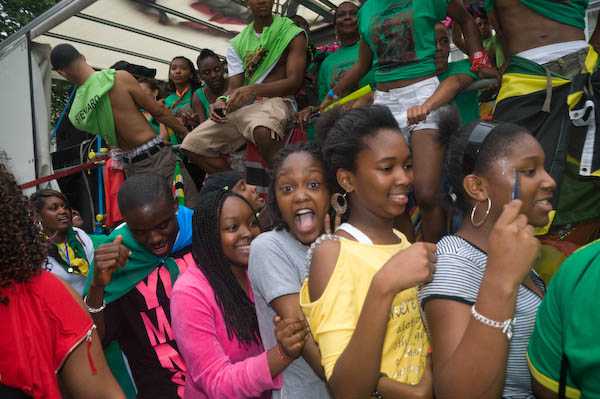
On Ladbroke Grove where the incidents occurred several hours later
One of my friends was still there later taking pictures (probably including some of those that made the papers), but I prefer the film coverage, at least for the actual scenes it shows from the street, where the viewer can get a better idea of the extent of the problem and make their own judgements. Still photography can sometimes catch a moment that has a particular intensity or that somehow represents a situation or an event, but if anyone did that here I’ve yet to see it. And even with cameras like the Nikon D3, video still seems to have an advantage in very low light, perhaps because sharpness is far less important in moving images.
One thing I find surprising is the apparent slowness of the police to respond to the youths, who they say were making trouble for two hours. There were after all reported to be 40 youths and 11,000 police, including a number with riot shields and the full gear – including, according to my photographer friend, tazers which were used on some of the youths, although this gets no mention in the press coverage I’ve seen.
There was a sickening predictability to the coverage of the event by some of our newspapers. Ridiculous comparisons made to the Notting Hill riots of 1958 when white racist thugs threw petrol bombs into the homes of black families, or the 1976 battle when the 3000 police on duty decided to close down carnival and were repulsed by those taking part. (Thanks to the web you can now access material published in 1976 by the Times (see Times Archive box at left, some way down the page, the BBC and others.)
Others used the small disturbances as a pretext to call for an end (or at least an emasculation) of carnival, something the police and some administrators have long wanted – with calls in 1976 by the then Commissioner of the Met, Sir Robert Mark,called for the event to be held in a stadium. Although carnival over the years I’ve been going has become in some ways more restrained and ordered, it is still a long way from that kind of sanitised display, with crowds behind barriers rather than taking part.
You can see my pictures of the carnival from Notting Hill on My London Diary.
